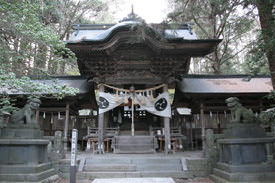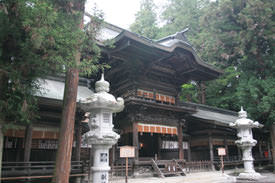立川流和四郎の建築
Tachikawa-ryu, a notable architectural style from mid to late Edo period, originated in Nagano and expanded to Kanto and Kyoto. Notable works include the Suwa Taisha Shimosha by Tachimune and Fukashi’s works like Busuwa Shrine. Tachimune, born in 1744, learned from Takumi Kohei Tomifusa in Tokyo and founded Tachikawa-ryu. He left a legacy in Suwa and returned to build Shiraiwa Kannon-do in 1774. The second generation, Tomimasa, expanded their influence with significant projects like Zenkouji and Akihabara Shrine.

Yahiko Shrine
By the 2nd generation, works like Zenkouji (1789) and Akihabara Shrine (1796) were created. Documents show their influence reached as far as Shizuoka Sengen Shrine. In 1802, Tomimune's successors continued with Shizuoka Sengen Shrine, leaving around 500 carvings over 40 years.

Suwa Taisha Shimosha Harumiya
They became renowned, working on Aichi’s Toyokawa Inari, Handas' Yatai, and Takayama’s Yatai in Gifu.